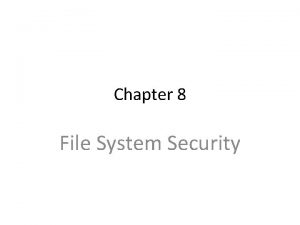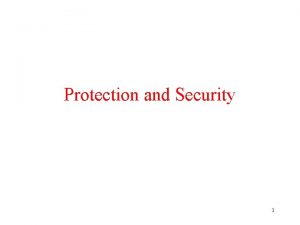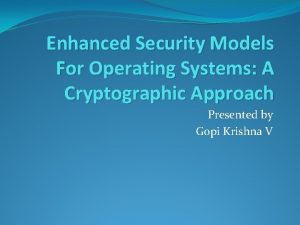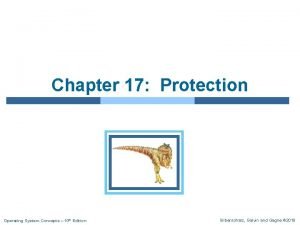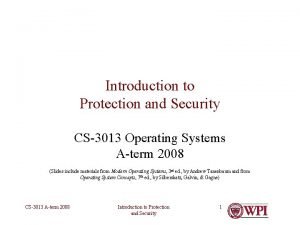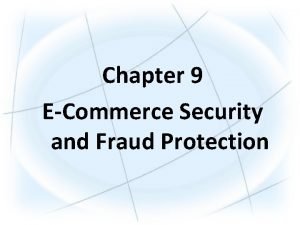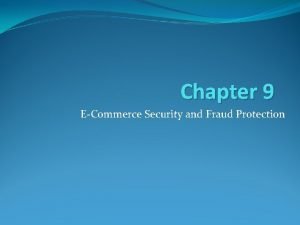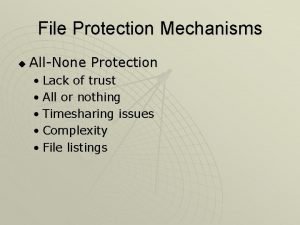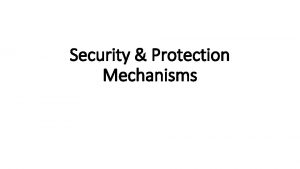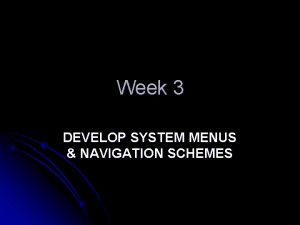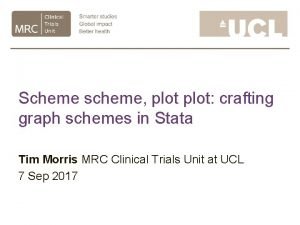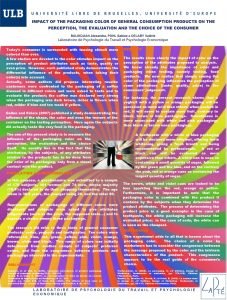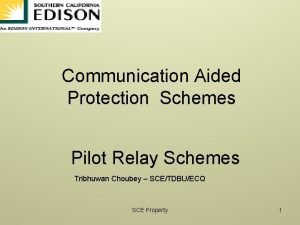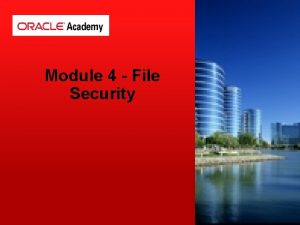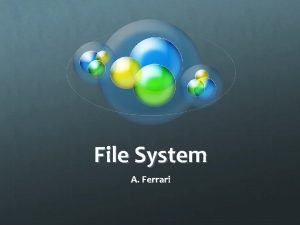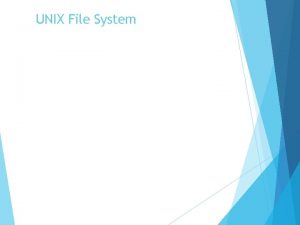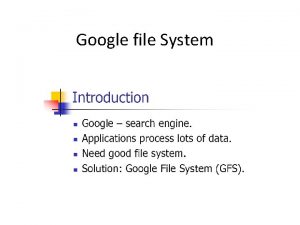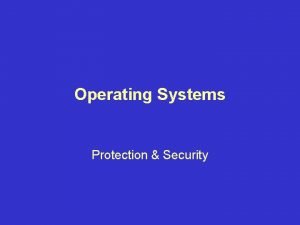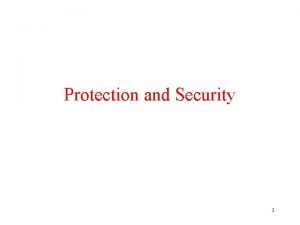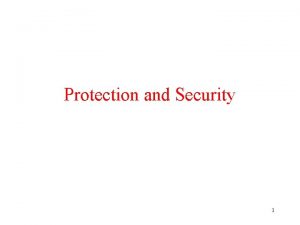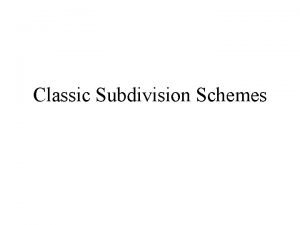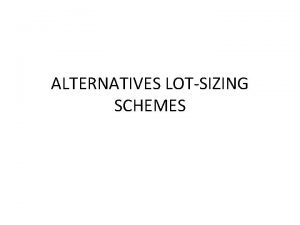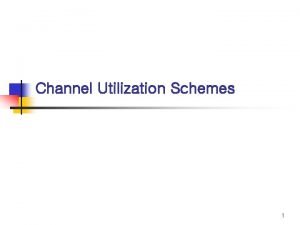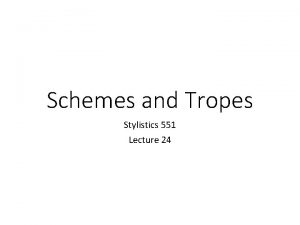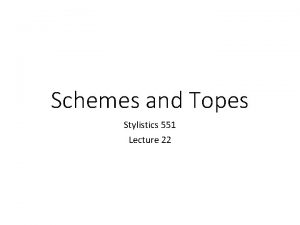Chapter 8 File System Security File Protection Schemes









![Changing the Access Rights Purpose – to set/change permissions in files • chmod [options] Changing the Access Rights Purpose – to set/change permissions in files • chmod [options]](https://slidetodoc.com/presentation_image/20ff5a6af8313dcedd9c14abaa5c0950/image-10.jpg)









- Slides: 19

Chapter 8 File System Security

File Protection Schemes • Login passwords • Encryption • File Access Privileges

Figure 8. 1 The process of encryption and decryption

File Access Rights • Types of Users: – Owner – Group – All/Other • Types of Permissions: – Read – Write – Execute • Types of Files – Directories – Other files

Table 8. 1 Summary of File Permissions in LINUX

Directory Permissions • read = list files in the directory • write = add new files to the directory • execute = access files in the directory

Determining File Access Rights

Table 8. 2 Permission Values

Table 8. 3 Permissions for Access to courses, labs, and temp
![Changing the Access Rights Purpose to setchange permissions in files chmod options Changing the Access Rights Purpose – to set/change permissions in files • chmod [options]](https://slidetodoc.com/presentation_image/20ff5a6af8313dcedd9c14abaa5c0950/image-10.jpg)
Changing the Access Rights Purpose – to set/change permissions in files • chmod [options] octal-mode filelist • chmod [options] symbolic-mode filelist Options • -R recursively process subdirectories

Table 8. 4 Values for Symbolic Mode Components

Table 8. 5 Examples of the chmod Commands and Their Purposes

Table 8. 5 Examples of the chmod Commands and Their Purposes

Figure 8. 2 Position of file type and access privilege bits for LINUX files (as seen by “ls –l” command)

Figure 8. 3 Position of access privilege bits for LINUX files as specified in the chmod command

Default File Access Rights • umask is a bitmap which tells which permissions to deny by default on new files • 022 = 000 010 (deny write for g+o) rwx r-x (new files permissions) • umask with no parameters returns the current mask value • umask newmask - sets new mask • umask command usually used in a startup file

SUID Bit • A special permission bit that allows executable files to run using the privileges of the owner of the files rather than the user of the file • Can be set using commands: chmod u+s filelist chmod 4 xxx filelist • Shows up in ls - l in place of the user x bit as an s if the file is executable - (rwsrwxrwx) • Very dangerous to use

SGID Bit • A special permission bit that allows executable files to run using the privileges of the owner’s group rather than the user of the file • Set using the commands chmod g+s filelist chmod 2 xxx filelist

Sticky Bit • A special bit that can be used as follows: • For a file: it directs the operating system to keep the program in memory if possible after it finishes execution (Early versions of UNIX) • For a directory: it sets it up such that only the owner of the directory can delete (or rename) files from the directory, even if other users have write privilege (tmp) • Can be set using the chmod command using the options: chmod +t filelist • Shows up in “ls –l” as a t - (rwxrwxrwt)
 File protection and security
File protection and security Privatesecurity
Privatesecurity File-file yang dibuat oleh user pada jenis file di linux
File-file yang dibuat oleh user pada jenis file di linux Protection and security in operating system
Protection and security in operating system Security and protection in operating system
Security and protection in operating system Security and protection in operating system
Security and protection in operating system Protection and security in operating system
Protection and security in operating system Distributed file system
Distributed file system In a file-oriented information system, a transaction file
In a file-oriented information system, a transaction file E commerce security and fraud protection
E commerce security and fraud protection E-commerce security and fraud protection
E-commerce security and fraud protection American heritage protective services
American heritage protective services Different file protection mechanism
Different file protection mechanism Different file protection mechanism
Different file protection mechanism New and navigation schemes selection of window
New and navigation schemes selection of window Punt block schemes
Punt block schemes Scheme scheme plot plot
Scheme scheme plot plot Aabb rhyme scheme
Aabb rhyme scheme Packaging color schemes
Packaging color schemes Afrikaans rhyme schemes
Afrikaans rhyme schemes
